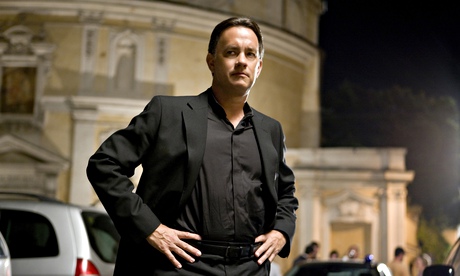
Margaret Atwood's MaddAddam trilogy, Dan Brown's Inferno, Louise Welsh's Plague Times trilogy, Terry Hayes's bestselling thriller I Am Pilgrim, the TV series Utopia – stories about pandemics (whether already raging or in danger of being unleashed) are currently rife, drawing on past outbreaks but also seeming to uncannily anticipate fears of the ebola virus. While such fictions can often be formulaic or trashily sensationalist, the theme of infectious diseases has long attracted illustrious authors ...
Giovanni Boccaccio, The Decameron (c1353)
Ten Florentines flee from their Black Death-stricken city to the hills and tell 100 tales in the frame-narrative of this collection of stories, a key influence on The Canterbury Tales.
Daniel Defoe, A Journal of the Plague Year (1722)
A novel recounting one man's experiences in 1665, but deploying a wealth of detail to simulate a text found rather than created. Other novels featuring 17th-century plagues include Rose Tremain's Restoration, Geraldine Brooks's Year of Wonders and Alessandro Manzoni's Italian classic The Betrothed.
Mary Shelley, The Last Man (1826)
Shelley's 2092 seems little different from 1792, and her main characters are transparently Percy Shelley, Byron and herself in drag; but just as she pioneered mad-scientist sci-fi in Frankenstein, so she pioneered the post-apocalyptic pandemic thriller as her pan-European plague heads towards England.
Edgar Allan Poe, "The Masque of the Red Death" (1842)
In Poe's Gothic tale, Prince Prospero's walled abbey is meant to protect him and his party guests against the Red Death , but a mysterious figure in a bloody robe – a victim of the disease, but also its embodiment – crashes the bash and proves his nemesis. Now often seen as a prophetic fable about the super-rich and Wall Street's "masters of the universe".
Albert Camus, The Plague (1947)
A 19th-century cholera outbreak was Camus's probable model as he depicted a plague coming to Oran, in a novel viewed as a parable about the necessity of human solidarity in the face of an absurd universe – but also as an allegory of the Nazi occupation of France.
Michael Crichton, The Andromeda Strain (1969)
US scientists struggle to contain a deadly organism brought back to Earth by a military satellite, after the Andromeda microbe kills everyone in the Arizona town where the satellite landed. Crichton's breakthrough novel detonated the boom in techno-thrillers and biothrillers.
Stephen King, The Stand (1978)
A similar premise to Crichton's – the US military is to blame again, this time allowing a strain of influenza designed for potential bioweapon use to escape – but with a focus on survivor communities mirrored in subsequent dystopian novels and screen fiction. Under 1% of the world's population survive after one man carries the disease out of an army base.
Richard Preston, The Hot Zone (1994)
A non-fiction book, but drawing on thriller techniques and hence a Defoe-like hybrid. Earning high praise from King as "horrifying", it investigates fatal or near-fatal incidents involving deadly viruses such as Aids and ebola – including the discovery of a mutation of the latter virus in a lab in Virginia. Ebola is also central to Tom Clancy's Executive Orders (1996), in which Iran uses it as a bioweapon when attacking its regional enemies.
Jose Saramago, Blindness (1995)
The Nobel prize-winning Portuguese author's novel posits a near-universal epidemic of blindness afflicting an unknown city. Like Camus's The Plague, it invites metaphorical readings and has a doctor at its centre; although the doctor's wife, who remains sighted, is equally prominent.
Jim Crace, The Pesthouse (2007)
As if determined, like Saramago, not to allow commercial authors to completely appropriate the dystopian pandemic genre, Crace imagines a plague-ridden America in a non-specific future dark age, fertile soil for feral gangs, scavengers and deranged millenarian sects. That it's intended as an allegory of the present-day US can't be ruled out.

